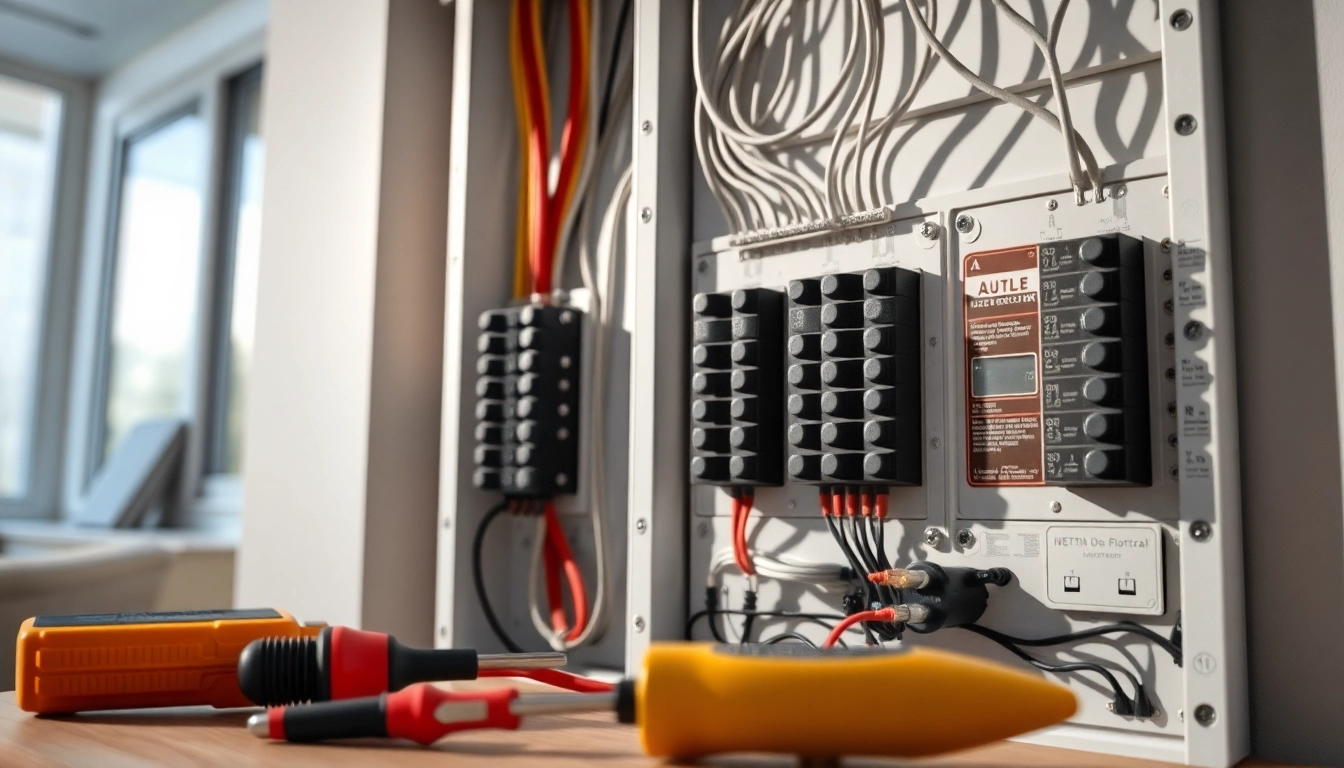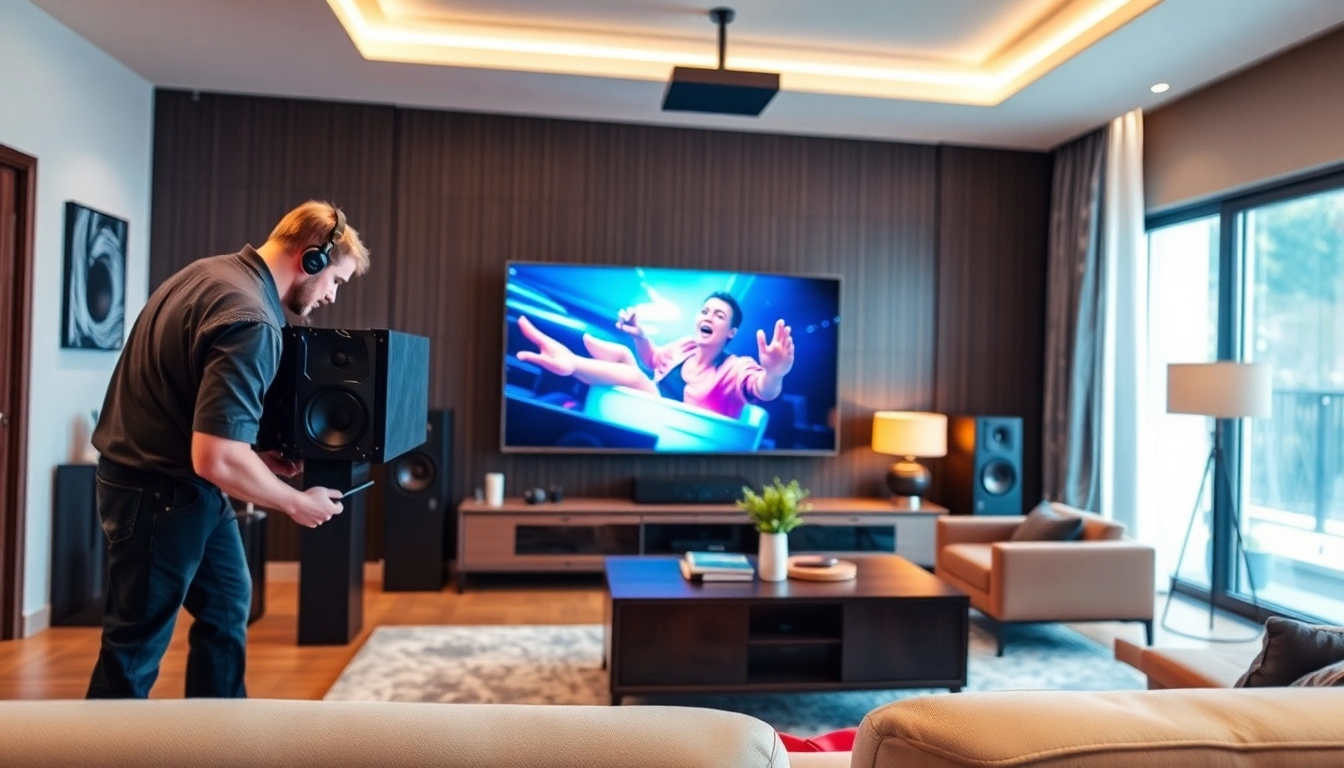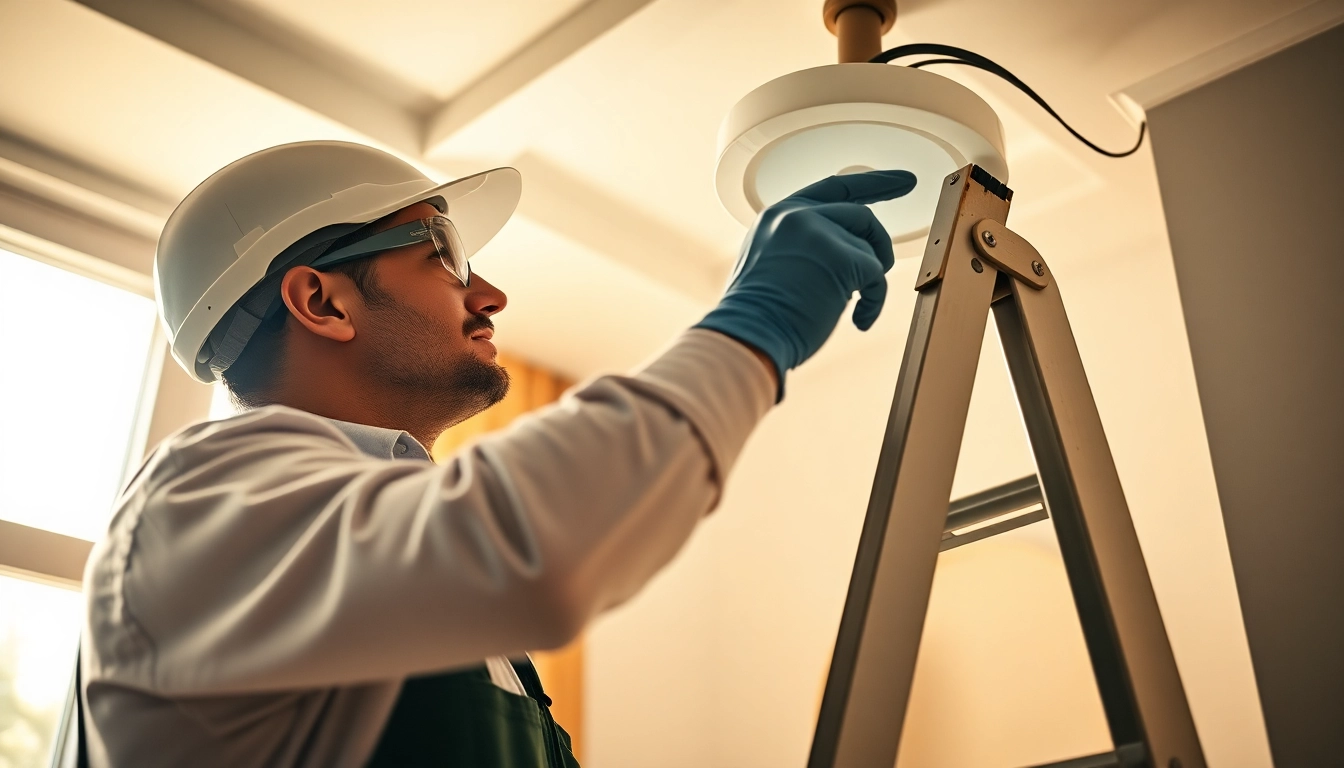Understanding the Electrical Panel
What is an Electrical Panel?
An Electrical Panel, commonly known as a breaker box or service panel, is the central hub that manages the distribution of electricity throughout a building. It plays a pivotal role in maintaining the safety and functionality of your electrical system, ensuring that power is effectively distributed to various circuits within your home or commercial space. Essentially, it converts the electrical supply from the utility company into usable current, protecting various devices and appliances from potential overload by appropriately directing electrical flow.
Components of an Electrical Panel
The functionality of an Electrical Panel is derived from its various components, which work in tandem to ensure efficient and safe electricity distribution. Key components include:
- Main Breaker: This is the primary switch that controls all the power flowing into the panel. It can shut off the electricity supply to the entire building in case of emergencies.
- Circuit Breakers: Individual breakers connect to specific circuits, protecting wires from overheating and preventing overloads by tripping when necessary.
- Bus Bars: These are metal bars that distribute the electricity to different circuit breakers within the panel, ensuring that each circuit receives adequate power.
- Neutral and Ground Bars: These help manage the return path for electrical current and ensure safety by providing an exit for fault currents.
- Panel Enclosure: Usually made of metal or plastic, this component houses all parts of the panel and safeguards them from environmental factors and accidental contact.
How an Electrical Panel Works
The operation of an Electrical Panel is fundamental to understanding its role within your electrical system. When electricity enters a building, it passes through the main breaker within the panel. If the electricity demand on a particular circuit exceeds its capacity, the circuit breaker trips, halting the flow of current to prevent overheating, thereby protecting your home from potential fire hazards.
This flow and control process continuously maintains equilibrium within your electrical systems, balancing power load across various circuits, and ensuring that each section of your electrical network functions efficiently. Moreover, the panel serves as a point for troubleshooting and monitoring electrical issues, enabling homeowners and electricians to quickly identify any malfunctioning circuits.
Signs Your Electrical Panel Needs an Upgrade
Increased Energy Demands
As technology advances, the amount of electrical energy consumed by homes and businesses increases. Many households now rely on multiple high-demand appliances, advanced entertainment systems, and smart home devices, all of which necessitate more power. If you constantly find yourself tripping breakers or experiencing dimming lights when using several appliances, it may be a sign that your electrical panel is not adequately equipped to handle your current energy demands.
Frequent Tripping Breakers
Frequent tripping of breakers is another clear indicator that your Electrical Panel requires an upgrade. While circuit breakers are designed to trip to protect circuits from overload, if this occurs regularly, it suggests that your panel is either overloaded or that the breakers themselves are worn out. Important factors contributing to this issue include inadequate panel capacity, outdated components, or faulty wiring.
Age and Safety Compliance
Older Electrical Panels, especially those installed several decades ago, may not meet current safety codes and standards. Electrical systems evolve with advancements in technology and safety standards to better protect occupants and property. A panel that is over 25 years old might lack the modern safety features that newer models possess, putting your property at risk for electrical fires or malfunctions. Additionally, many older panels were designed to handle lower electrical loads than modern equipment requires.
Choosing the Right Electrical Panel
Types of Electrical Panels
There are several types of Electrical Panels available, each suited for different applications and power requirements:
- Main Breaker Panel: This is the most common type, featuring a large main breaker that controls the entire system.
- Sub-Panels: These are smaller panels connected to the main Electrical Panel to manage additional circuits in specific areas, such as garages or add-ons, allowing for greater control.
- Smart Panels: Equipped with advanced technology for monitoring and controlling energy use, these panels provide real-time insights and can improve energy efficiency.
- Combination Panels: These mix functions of circuit distribution and protection, tailored for commercial applications.
Factors to Consider When Selecting
Choosing the right Electrical Panel involves several considerations, including:
- Capacity: Ensure the panel can handle your current and future power needs. Residential panels typically range from 100 to 200 amps.
- Circuit Requirements: Evaluate the number of circuits you need based on your household appliances and devices.
- Safety Features: Select panels with updated safety features such as GFCI and AFCI breakers which provide additional protection against electrical fires.
- Compatibility: Ensure the new panel is compatible with your existing wiring and meets local regulations.
Cost Analysis of Different Options
The cost of Electrical Panels can vary significantly based on features, capacity, and brand. A basic panel can cost between $250 to $450, excluding installation costs. Upgrading to smart panels or models with enhanced safety features can increase your investment but often results in long-term energy savings. Always consider the long-term benefits versus upfront costs, factoring in installation fees, which can significantly impact the overall budget for upgrading your electrical panel.
Upgrading Your Electrical Panel: The Process
Steps for a Safe Installation
Upgrading your Electrical Panel should be approached methodically to ensure safety and compliance. Here’s a step-by-step guide to the installation process:
- Assessment: A licensed electrician should first evaluate your current system, determining needs based on the size of your home and energy demands.
- Permitting: Obtain necessary permits from your local electrical authority, complying with local codes and regulations.
- Power Shut Down: Prior to installation, the power must be shut off to ensure safety during the upgrade.
- Installation: The new panel is mounted, and existing circuits are connected, ensuring that all connections are secured and insulated properly.
- Inspection: Once installed, the system must be inspected by an authorized inspector to verify compliance with safety standards.
- Restoration of Service: After approval, power can be restored to the panel, followed by testing to ensure all circuits are functioning correctly.
Hiring the Right Professional
Selecting a qualified electrician is crucial for a successful upgrade. Look for individuals with proper licensing, certification, and a solid reputation within your community. Seeking referrals or checking online reviews can provide insight into a contractor’s competence. Always ask about their experience with similar installations to ensure they are well-versed in the best practices and current electrical code requirements.
Post-Installation Checklist
After installation, it’s vital to conduct a thorough checklist to ensure everything functions correctly:
- Verify that all breakers are labeled correctly for easy identification.
- Test each circuit to ensure proper operation.
- Conduct a visual inspection for any exposed wiring or potential hazards.
- Review the panel’s documentation for warranty and future maintenance needs.
Maintaining Your Electrical Panel
Regular Inspection and Testing
Regular maintenance of your Electrical Panel is essential in preventing issues that could lead to safety hazards. It is advisable to schedule inspections with a qualified electrician at least once every few years. Having a professional check for wear and tear, rust, or corrosion can preemptively identify problems that may escalate if left unchecked. Testing the breakers’ functionality and ensuring they trip correctly is also part of maintaining the overall health of the system.
Common Issues and How to Resolve Them
Some common issues homeowners experience with their Electrical Panels include:
- Overloaded Circuits: This can often be resolved by redistributing the load across circuits or upgrading to a higher capacity panel.
- Frequent Breaker Trips: Investigate underlying issues, such as faulty wiring or loose connections, and address them promptly.
- Rust or Corrosion: Keep the panel dry and schedule timely cleaning and maintenance to prevent rust from forming.
When to Call a Professional
Some scenarios necessitate immediate dismissal of DIY attempts to resolve electrical issues. If you encounter persistent tripping breakers, buzzing sounds from the panel, or any signs of electrical burning or odor, it’s crucial to call a licensed electrician immediately. These could indicate severe problems that require expert intervention to ensure the safety of your property and its occupants.















Leave a Reply